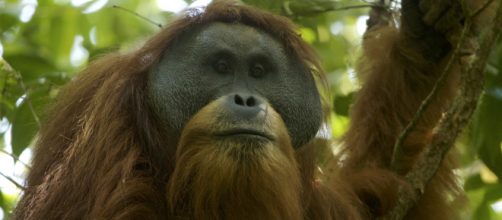A Species of Orangutan had been puzzling scientists since 1997. A tiny population of orangutans discovered on the island of Sumatra reveals a third species of orangutan known as the Tapanuli Orangutan. The research project that started in 1997 has now unpicked the secret to these third species of orangutan relatives reports BBC News.
Third species
The Tapanuli Orangutan is related to the Borneo and Sumatra Orangutans that live on the islands of Borneo and Sumatra. The discovery came to light when the skulls of the Tapanuli did not match the skulls relating to either species.
Other distinctions of the Tapanuli Orangutans are the types of mating calls and vocal productions that differ from that of the Bornean and the Sumatran Orangutans according to BBC.
The Tapanuli Orangutan is the first new type of orangutan species in almost 100 years. Scientists have now been aiming to place the newly discovered primate on the endangered species list since there are only 800 Tapanuli Orangutans living in the wild said BBC News. Researchers from Universities in Liverpool and Zurich along with researchers from the John Moores University and the Sumatran Orangutan Conservation Programme will continue to study the species and ensure the safety of the animal in the wild in hopes that the species will continue to live on in the future.
Deconstruct genetics
The Tapanuli Orangutan wasn't just discovered by their skulls or vocal productions. Scientists have also looked at their genetic code according to BBC. Many of the genetic sequences in the Tapanuli Deoxyribonucleic Acid (DNA) were vastly different from the genomes found on the other two species. The researchers took on the task of mapping out the genetic codes to see when the Tapanuli broke off from the other species of orangutans.
The results were shocking. The Tapanuli species broke off from their relatives 700,000 years ago based on 37 genetic markers.
Professor Wich from the Liverpool John Moores University said to BBC News that it is a wonderful experience to add one more primate to the list of seven primates known in the world that are closely related to humans.
"It is very worrying to discover something new and then immediately realize that we have to focus all our efforts before we lose it," Professor Wich added.
The results show how vast the species have been adapting to their habitat as evolution progressed. Now it is only a matter of time to ensure that we take the right steps and plan for a future with these wonderful new primates now living on Sumatra with their relative cousins.


